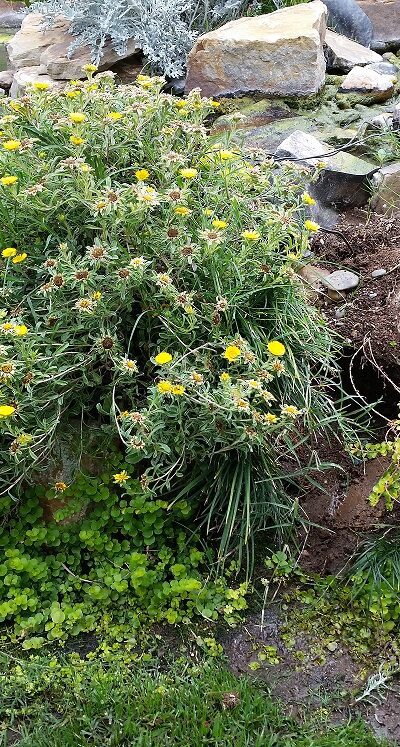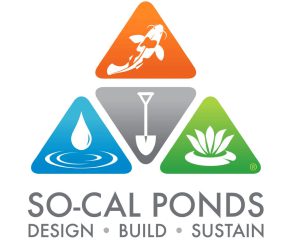
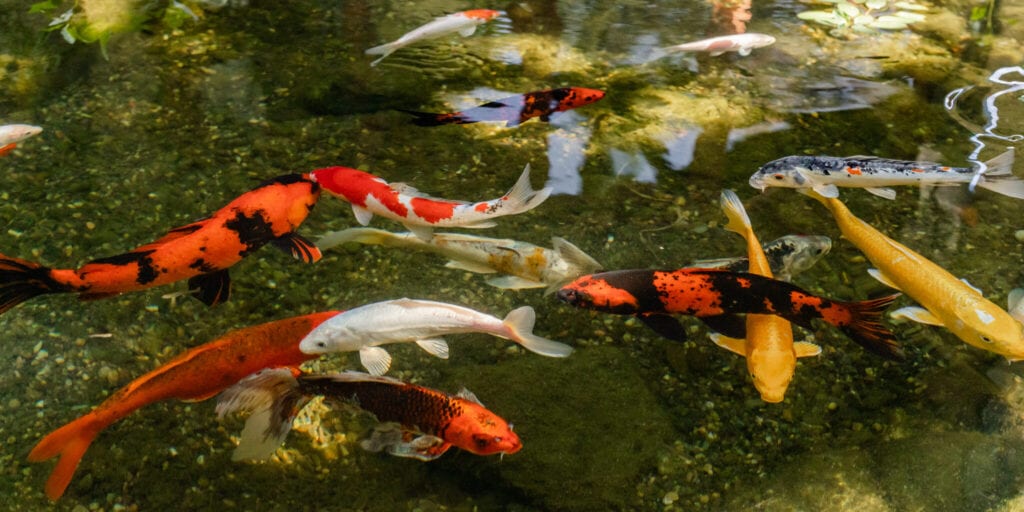
Pond Issues
Having a Koi pond or an aquatic plant pond can increase the visual appearance of a property, it is also believed that most people who own koi or aquatic ponds find it relaxing and relieves stress. Not to mention developing a passion for an environment that you’re able to maintain for yourself. Ponds can encounter a number of recurring pond problems throughout time, especially considering the amount of time and effort put into maintenance, but these problems shouldn’t disregard you from owning your own oasis. You should be informed that problems with any pond may occur and usually have fairly easy solutions. The following will outline some of the most common problems associated with koi ponds, as well as providing solutions to fix them.
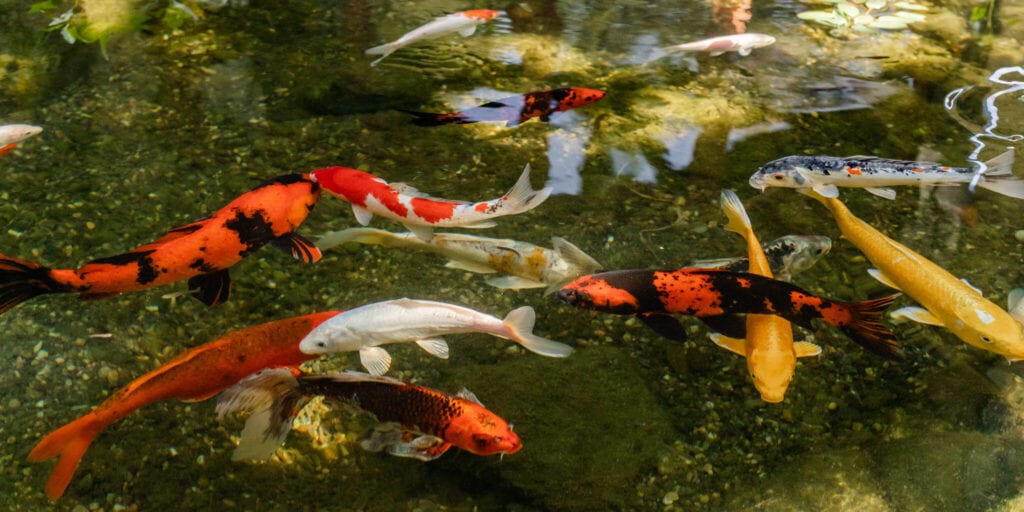
Pumps
Modern made pumps are extremely reliable and energy efficient, but as with any mechanical device there are plenty of things that may go wrong. Fortunately, problems with pond pumps are usually predictable and by checking a few basic things, it can solve majority of pump failures or problems you may be experiencing.
Water flow
Your pond’s pump should always have access to water, if you’ve noticed that your pump doesn’t seem to be working properly check to see if anything is blocking water access to the pump such as rocks, debris, leaves, a clogged skimmer net, or skimmer mat that’s gone too long without cleanings. All of these contribute to taking water away from your pump. It’s also possible that your pond can just have low water levels, keeping water away from the pump through the skimmer box.
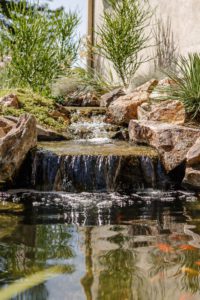
Make sure pump is receiving electricity
If your pump still doesn’t seem to be working correctly, check the ground fault circut detector (GFI), you may need to reset it, the GFI reset button should be located on the outlet itself. Be sure to inspect your circuit breaker as well to make sure neither has been tripped. You can also try plugging in a different compatible appliance into the outlet to check that power is getting to the outlet. If there’s no power and if you’ve checked the GFI, please contact a qualified electrician.
Inspecting your pump
If something still seems off with your pump, you can check the intake on your pump for any possible debris that has lodged inside of it. Most pumps can deal with small amounts of debris, but larger debris can infiltrate your pump or skimmer and block the impeller intake, clean out the intake and make sure it is clear.
After you’ve cleaned your pump, try plugging it in again to see if the impeller is spinning. If your impeller is not spinning, the first thing you can try is giving it a jump start. You can achieve this by simply unplugging the pump and give the impeller an assisted “bump” with a screwdriver. If it has started spinning, re-install it and try again. If your impeller is spinning accurately but still not getting any water flow, this is when you will check again to see if your pump is getting enough water and that your plumbing is clear.
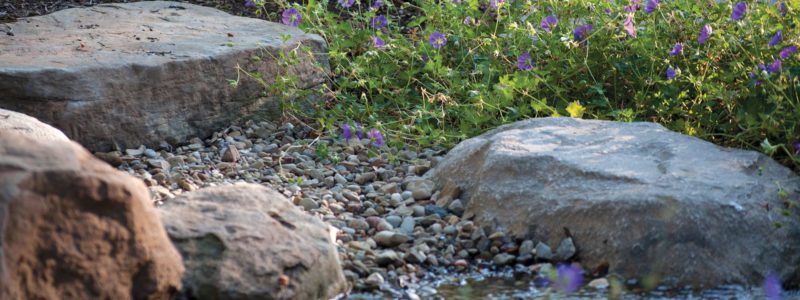
Pond Leaks
Identifying and servicing a possible leak will help you repair the problem efficiently. Any amount of water loss will vary according to the region, state, and the time of year. However if you’ve noticed a slight drop in water levels in your pond and wonder if you’re losing water due to evaporation, or if you have a leak in your pond there’s a couple indicators to tell which is which. Evaporation is caused by water turning into a vapor and escaping from your pond, 1 to 3 inches of evaporation in a pond is normal. If you are seeing 4 or more inches of water loss in a week, you may have a leak.
If your pond is experiencing a leak, it is very important to not try to fill the water loss with regular hose water without dechlorinator, you’ll damage your fish and possibly your pond.
Regardless of the climate, a cascading or basic waterfall could experience some water loss due to splashing and moving water, because it has greater exposure to additional evaporation than it would still water in a pond. The quantity and size of your waterfall(s) will also affect the amount of water that is being lost.
Rocks and excessive plant/algae growth inside the stream, possibly even in your biological filter, can restrict flow of water and divert it over the edge of the liner. Any plants and algae accumulating should be maintained by trimming them back in order to let the water pass freely.
Inspecting your Pond for a Leak
If your pond experiences a loss of water more rapidly than normal evaporation, you most likely have a leak. To detect a leak, look for any low edges around your pond. Settling at the pond’s edge is one of the most common causes of a leak. Lower edges are found around the stream or waterfall where settling may have occurred over time. Carefully inspect the edges of not only your stream and waterfall, but also the perimeter of the pond. As the dirt around the stream or waterfall settles, it can create low spots that may cause water to escape over the edge of the liner. Keep in mind to also check for any wet spots or muddy areas around your pond and pump, this is the most noticeable way to show you have a leak.
If you’re still noticing any water loss, shutting your pump off for a day so you can determine the location of the leak. If after turning off your pump for 24 hours and the water level remains the same, then it’s safe to assume that that the leak is not inside the pond.
The next step would be to check the pipe, plumbing fittings, and pump connections for leaks. Another area where a leak may occur, is the faceplate of your skimmer, if you have one. In the event that the water level stopped dropping above the bottom of the faceplate, investigate the skimmer. It may not have sealed correctly.
Excessive Amount of Plants/Vegetation
Pond plants are a beautiful addition to any pond, and are generally beneficial.They provide feeding areas for fish and protect banks from erosion. However, an excessive amount of water weeds or overgrown plants can impact your pond greatly. Overgrowth of algae and other water weeds can seriously interfere with the pond, creating undesirable changed that may threaten your pond life.
There can be a few reasons why your plant life has increased. An intensified amount of nutrients entering the pond often leads to the expanding growth of algae. Another reason for excessive plant growth is that there may be an abundance of shallow areas in your pond. Any area with less than 3-4 feet of water is ideal for aquatic plant growth. If there’s too much sunlight reaching the bottom of shallow areas, adding water lilies provides shade and keeps the bottom of the pond cooler and less hospitable to algae growth.
